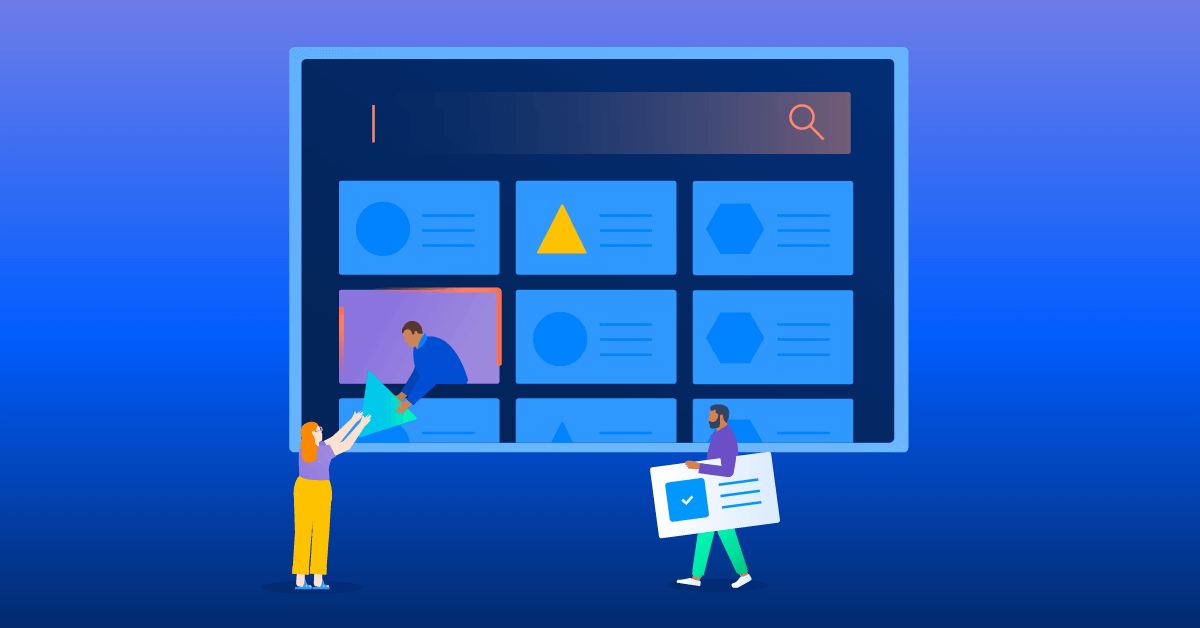At Lufthansa Systems, a day in the life includes providing tools and applications to over 300 external airline customers that power planning, scheduling, calculations, travel tax estimation, and even in-flight movies. Founded in 1995, this German airline IT enterprise initially leveraged extensive ITSM practices, but when the department hosting the tools was eventually liquidated, it was time to rebuild.
In 2021, Lufthansa Group was already using ServiceNow for its infrastructure-related ITSM processes, however, it was agreed upon across the Service Management Tooling Team that a new ITSM solution should be adopted to better support Lufthansa Systems’ IT operations as well as Enterprise Service Management. The team brought in Jira Service Management due to its flexibility as well as its familiarity from their previous use of Jira Software.
By consolidating their Jira tools into Jira Service Management, the team was able to develop an improved customer portal that seamlessly matched and supported agents through troubleshooting. According to the Product Manager of Atlassian Tools, Lars Lipecki, “Customers really like it, and it’s far easier for agents to use… Before, customers had to sift through hundreds of airlines and 380 projects in Jira Software to open a ticket for their specific company and need. Then agents had to check every one of those projects. Now, everyone has one entry point. Customers can even open many tickets at once, and each ticket is assigned to agents and product lines based on what the customer selects.”
Atlassian recently sat down with Lufthansa Systems’ Service Management Tooling Team to discuss this implementation process for a Team ‘23 session on Jira Service Management. This blog will cover the key findings of implementing Jira Service Management alongside a legacy ITSM for an optimized experience for customers and agents alike.
The Service Management Tooling Team
Lufthansa Systems’ Service Management Tooling Team handles 11,000 issues per year through Jira Service Management alone – that’s quite a bit for a team of only 25 to handle – especially keeping in mind the tier of consequences in the case of a mishap within aviation. To maintain bandwidth, the team knew they needed to implement a frontline self-service solution empowering their customers with the right set of tools to be able to articulate their issue to IT and in turn empower IT with the management systems for a speedy resolution.
Providing seamless customer service with Jira Service Management
When customers of Lufthansa Systems find themselves needing additional support, they are routed to the Customer Portal ticket form where they are first offered a self-navigating issue topic search form before having the ability to choose from the following agent-involved options:
- Incident Requests
- Service Requests
- Request For Changes
- Questions
By adding the issue-topic search form they can cut down on basic tasks that can become tedious while piling up in the queue. But for heavier tasks, when a ticket finally reaches the agent’s pipeline, the customer will have submitted a simplified ticket with a clearer picture of the situation allowing for agents to respond tactically while having that data integrable to the rest of the agents’ toolbox.
Once a customer alerts the team of an incident by filling out their form, an agent can automatically see related services and who owns them by having Atlassian’s Assets feature auto-synced to the ticket-taking process. This use of Assets cuts down on the time agents would usually spend researching and making decisions, allowing agents to confidently make effective data-backed decisions at a much faster rate.
Thanks to automation, customers are able to receive real-time status updates over the course of their troubleshooting process. Unlike most IT ticketing processes that require agents to update information in multiple distribution channels, any service updates on the agent’s backend will automatically sync to the customer’s incident report. This feeling of transparency offers customers a level of comfort during the process which further allows the agents to work on the ticket, resulting in a much more elevated customer experience (and agent experience).
Through Jira Service Management’s knowledge base feature, customers have the opportunity to handle more common issues themselves. When a customer begins to fill out a ticket, the Confluence-powered knowledge base surfaces articles and documentation with information relevant to their issue when there is a known fix. By giving the customer a chance to swiftly resolve their own issue, IT is able to have greater bandwidth for more difficult resolutions.
Bringing excellent service experiences beyond the Service Management Tooling Team
As Lufthansa Systems continues to focus on scaling its support to meet the needs of its growing customer base, it sees Atlassian products as a key component of success. The team is looking to bring Jira Service Management to other teams in the organization, such as business teams (like HR, marketing, etc.) who all need a way of providing excellent service to their customers. Some of these teams have already noticed the benefits the Service Management Tooling Team is seeing from Jira Service Management and are requesting to use it for their own needs. To expand upon their most recent features and updates to their customers, Lufthansa Systems is preparing for a migration to Atlassian Cloud.
If you would like to learn more about Lufthansa Systems’ experience as an Atlassian customer, watch our recent on-demand discussion, How Lufthansa Systems serves over 300 airlines with Jira Service Management, from Team ‘23 featuring Hendrik Hilbig from Lufthansa Systems and Product Manager of Atlassian Tools, Lars Lipecki. For a deeper dive into Lufthansa’s ITSM wins, check out their customer story, Lufthansa Systems transforms aviation and ITSM with Jira Service Management.


